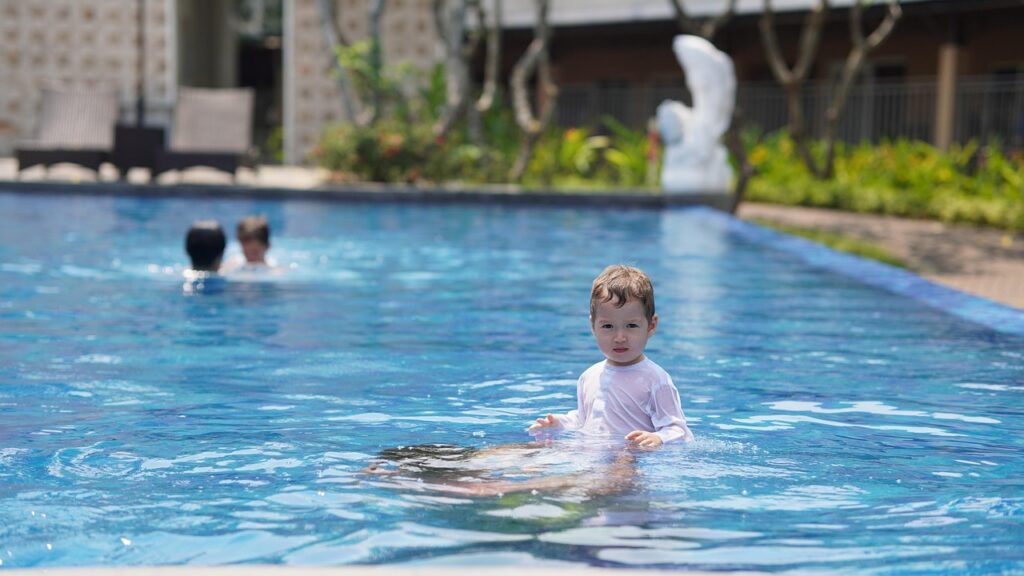Finding swimming lessons for kids near me can be simple with the right approach. Many local community centers, swim schools, and sports clubs offer tailored classes for children of all ages and skill levels. The best way to find suitable swimming lessons near you is to search local listings or use online platforms that filter by location and age group.
Parents should consider factors like instructor qualifications, class size, and safety measures when selecting a program. Understanding what is available locally helps ensure children get structured, professional guidance in a safe environment.
Swimming is an essential skill that promotes safety and confidence in the water. Knowing where to find reliable lessons nearby makes it easier for families to prioritize this important activity.
Finding the Right Swimming Lesson for Kids Near Me
Choosing a suitable swimming lesson involves assessing local options, instructor qualifications, and how programs accommodate different ages and skill levels. Parents should focus on safety, teaching style, and the structure of lessons tailored for children.
Local Swim Schools and Facilities
Nearby swim schools should have clean, child-friendly pools with appropriate water temperature. Access to well-maintained changing areas and safety equipment is essential.
It’s important to check the facility’s reputation through reviews or word of mouth. Many offer free trial lessons or tours, allowing parents to observe the environment and teaching methods before enrolling.
Swimming programs vary by facility; some specialize in beginner lessons, while others offer competitive training. Location and class schedules should fit family routines to ensure regular attendance.
Evaluating Certified Instructors
Instructors should hold certifications from recognized organizations, such as the American Red Cross or YMCA. Certified teachers have training in child safety and effective swimming techniques.
Experience with children is crucial; instructors must understand different learning paces and provide encouragement. Parent feedback on the instructor’s communication and attentiveness can indicate quality.
Background checks and first aid training are additional factors to verify. The ratio of instructors to students should be low enough to allow personalized attention, typically 1:6 or smaller.
Age Groups and Skill Levels
Swimming lessons are often divided by age, starting as young as six months for water adjustment classes. Programs for toddlers focus on water comfort and basic skills.
Older children and beginners receive instruction on basic strokes, floating, and safety rules. Advanced classes build endurance, stroke refinement, and introduce competitive techniques.
Parents should confirm the class level matches their child’s abilities to avoid frustration or boredom. Some programs offer progress evaluations to help place kids in appropriate groups.
Key Considerations for Enrolling in Kids’ Swimming Lessons
Parents should focus on safety, appropriate class sizes, and how involved they can be during lessons. These factors directly affect the child’s learning experience and comfort level.
Safety Standards and Supervision
Swimming programs must follow strict safety protocols to minimize risks. Look for lessons held in pools with certified lifeguards and swim instructors trained in CPR and first aid.
Facilities should maintain clean, well-maintained pools with clear water and proper temperature controls. Comprehensive safety measures include emergency action plans and secure pool access to prevent unsupervised entry.
Supervision ratios are critical. A recommended maximum is one instructor per six children under age six, ensuring each child receives proper attention. Check if staff regularly undergo background checks to guarantee a safe environment.
Class Sizes and Scheduling
Smaller class sizes improve learning outcomes by offering more individualized instruction. Classes with fewer than eight children are preferable for effective teacher engagement and quicker skill development.
Flexible scheduling is essential to accommodate parents’ busy routines. Programs should offer multiple session times, including weekends or evenings, making it easier to maintain consistency in attendance.
Consider the lesson duration and frequency. Sessions around 30 minutes, held once or twice a week, suit young children’s attention spans without causing fatigue or loss of interest.
Parent and Child Participation Options
Some programs allow parents to stay poolside or participate directly during lessons, which can boost child confidence and ease separation anxiety. Others encourage independent child instruction to foster self-reliance.
Parents should verify if the facility provides observation areas or interactive sessions and whether instructors communicate progress regularly. Active parental involvement often correlates with better skill retention and motivation.
Choosing a program with clear guidelines on parent participation helps match family preferences and supports the child’s comfort and learning pace.
